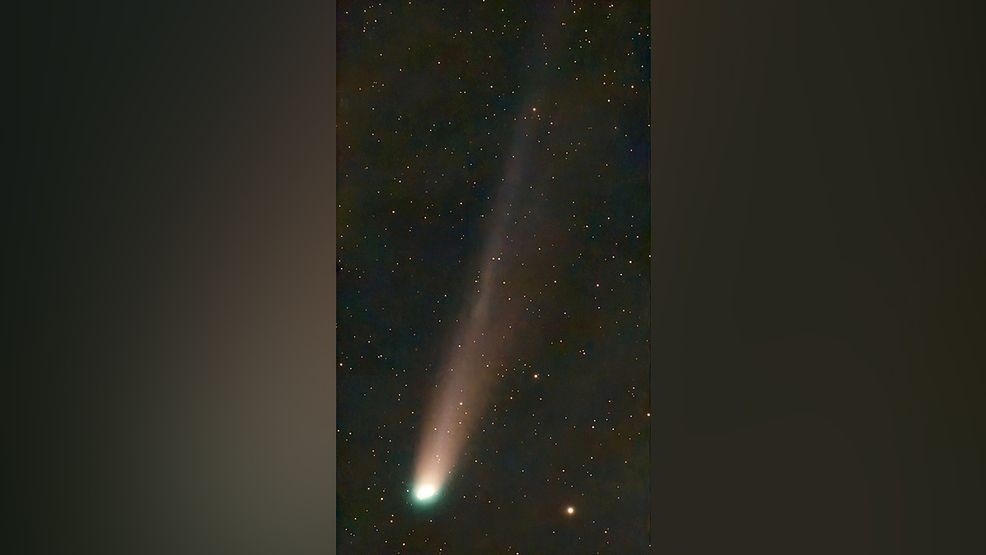PORTLAND, Ore. (KATU) — Space, it’s full of surprises.
An object, discovered at the beginning of the year, was first thought to be an asteroid. But then it grew a tail.
Astronomers with the Mount Lemmon Survey in Arizona found Comet Lemmon (C/2025 A6) on Jan. 3. At that time, it looked like an asteroid. But as the object got closer to the sun, a coma and a tail appeared, telltale signs of a comet.
The comet is fast approaching its closest encounter with Earth on Tuesday, March 21, a harmless 28.6 million miles.
As it makes it closest approach to us Earthlings, astronomers are expecting it to be visible with the naked eye.
For those of us in the Pacific Northwest, you can have a chance to spot it low in the northwest sky about 90 minutes after sunset.
Jim Todd, the director of space science education at OMSI, says look for a faint and hazy “cloud.” He says the comet’s coma (around the comet’s nucleus) will be greenish and its tail will be a faint blue.
The good news: The comet’s closest approach to us will occur during new moon, meaning the moon won’t be in the sky to drown out the faint light of the comet. The bad news: Who knows whether the weather in these parts will cooperate at this time of year.
As of this writing, the forecast from our weather team suggests that it might be clear enough Monday night for Portlanders to spot the comet. The forecast for that day is for mostly sunny skies. But clouds increase Tuesday.
We’ll just need to go outside on these nights to find out.
Watch KATU News to get the latest weather forecast and check out our weather page, too.
But you can start looking for the comet right now to see if you can spot it with your naked eye or, for better luck, use binoculars or telescopes. Again, weather permitting.
The icy visitor from the outer solar system is estimated to be about 1.25 miles in diameter.
It’s currently in the constellation Canes Venatici and about 91.4 million miles from us, according to The Sky Live. It will fly into the constellation Bootes next door to Canes Venatici on Oct. 20, Astronomy magazine says.
If you’re familiar with the kite-shaped constellation, look for the comet about halfway between the tip of the “kite,” the star Beta Bootis, and the bright, reddish star Arcturus. (Arcturus will be the brightest star in that part of the sky.)
Check out this star map for the shape of the constellation. You can see Beta labeled as the “B,” and then Arcturus below.
The Sky Live also has the latest map and information about the comet.
Todd says the comet may brighten to magnitude 3 or 4, well within the ability to snag a look at it with your naked eye. But light pollution will make that task more difficult, so getting away from city lights will improve your chances of seeing the comet.
Binoculars will also help.
According to The Sky Live, the comet has already brightened to magnitude 4.8, which is within the range of naked eye viewing for most people.
Comets are balls of ice and dust that orbit the sun. As they get closer to the sun, they start to “feel” the heat the of the sun. Ice then turns to gas, causing the coma and the tail to form.
Get out somewhere with clear skies to see this comet. If you miss it, you’ll need to wait until the year 3175, the next time it gets close to us to see it again, according to Astronomy magazine.
First Appeared on
Source link













